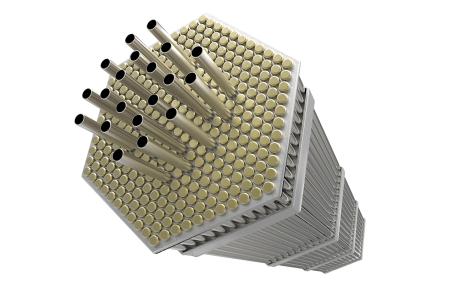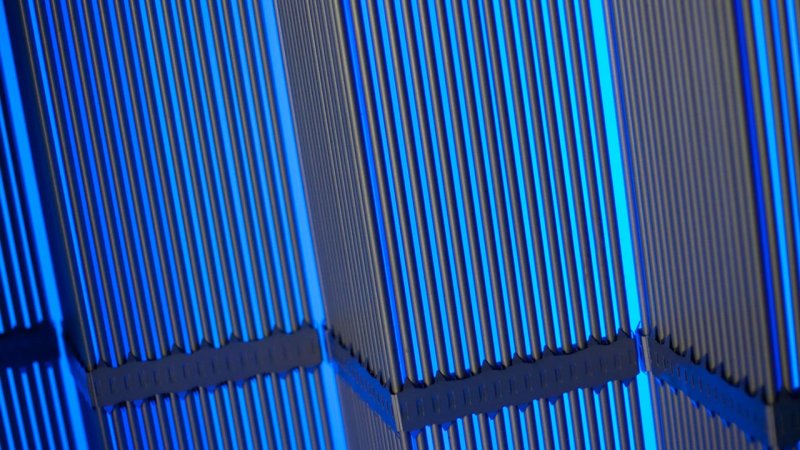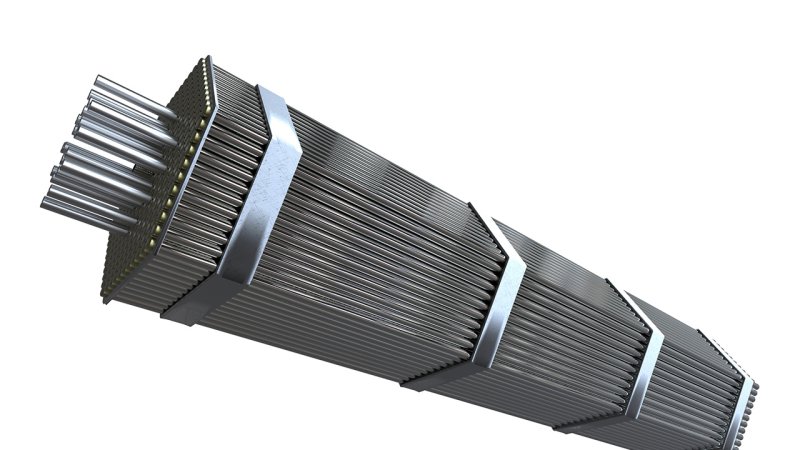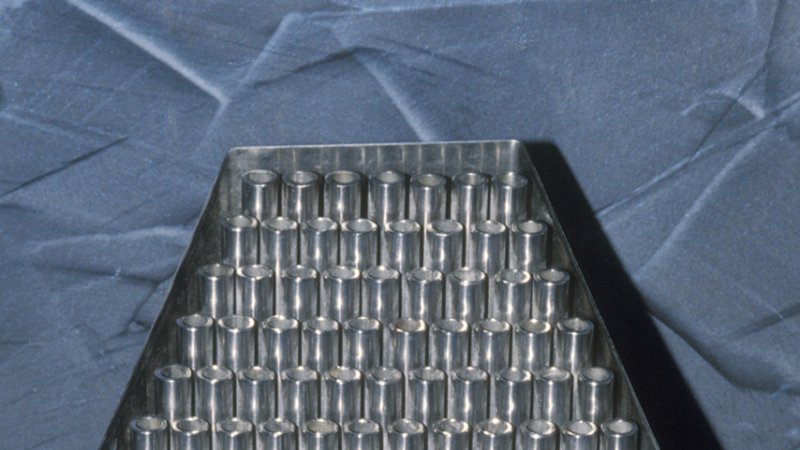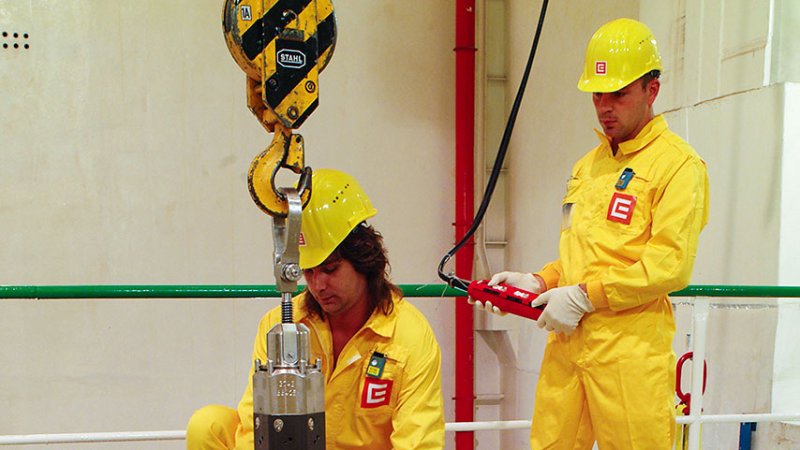
Fuel Assembly
6 min read
Some fuel assemblies leave certain locations of the fuel rods empty and use it for the control and shutoff rods.
Fuel pellets are made of uranium dioxide UO2. These pellets cannot be inserted directly into a reactor. They are used to make a fuel assembly that facilitates easier fuel handling during refueling operations or when the reactor core layout is being altered. Additionally, they facilitate cooling and heat removal, as well as control of the fission reaction. The fuel pellet cladding prevents direct contact between the coolant and the radioactive fission products produced, so that no radioactive substance is released into the coolant.
Each type of a reactor requires its own type of fuel. Thus, made-to-measure fuel assemblies are manufactured for each specific reactor.
The PWR fuel assembly must withstand temperatures of about 300 °C for four years at its surface and up to 2,000 °C inside the pellet as well as pressures of 15 MPa and a very strong neutron flux.
PWR Fuel Assembly
The most commonly used reactor is the PWR reactor (fueled by slightly enriched uranium, cooled and moderated by ordinary water). The PWR fuel assembly is composed of uranium cylindrical pellets 1 cm long and about 8 mm in diameter. Each weighs about 5 grams. The pellets are inserted into a cylindrical cladding made of an alloy called “zircalloy”. It is made of atomically clean zirconium alloyed with titanium, niobium, iron, chromium, or nickel. The cladding prevents any direct contact between the cooling water and the fuel while it has to be transparent to the neutrons. The narrow gap between the pellet and the casing is usually filled with helium for better heat removal. This gap also provides space for possible pellet expansion caused by heat and gases produced during fission.
A string of pellets cased in the zircalloy cladding is called a fuel rod. It is usually 4—5 meters long. Each rod contains 350—400 pellets. Each fuel assembly contains 179—264 rods and the fuel assembly diameter is approximately 20 cm. The rods are structurally supported so that they cannot be mutually displaced by the extreme thermal and strain stresses inside the reactor core. Some assemblies have fewer rods and control and regulating rods are inserted into the resulting gaps. The total fuel, about 121—193 fuel assemblies residing in the reactor core is called the “fuel load”. In total, there are 18 million pellets in the reactor core. The fuel assemblies have a square cross-section while the fuel for the PWR Russian modification reactors known as VVER has a hexagonal cross-section.
A single PWR fuel assembly weighs 600 kg.
Spherical fuel pebbles for HTGR reactors.
Fuel for Other Types of Reactors
BWR fuel assembly.
BWR (reactor cooled by ordinary water: the water boils and releases steam inside the reactor vessel). BWR fuel assemblies are similar to that of PWR. Each assembly is inserted in its own channel. This channel rectifies the flow of water.
CANDU fuel assembly.
CANDU (Canadian reactor using heavy water as both coolant and moderator). CANDU fuel assemblies, known as bundles, are cylindrical about a half meter long and 10 cm in diameter. They consist of 37–43 pencils. Since these bundles are quite short, they do not require an additional load-bearing structure. A single bundle weighs about 20 kg. There are about 12 bundles in every channel. A 790 MW reactor contains 480 channels, i.e., 5,760 bundles and 5 million pellets.
Magnox (gas cooled reactor using graphite as a moderator). A magnox fuel rod is 1 m long and 3 cm in diameter. It is covered with magnesium oxide. The fuel assembly is composed of several rods and its diameter is 24 cm.
AGR fuel assembly.
AGR (advanced gas cooled reactor where carbon dioxide is used as a coolant and graphite as a moderator). The fuel rod cladding is made of stainless steel which also acts as a partial neutron shielding. Operation at elevated temperature is possible. A single bundle is composed of 36 rods and weighs 43 kg. The bundle is cased in graphite.
RBMK (water cooled reactor moderated by graphite which is used exclusively in the former Soviet Union countries). Two 3.5 meter long bundles each composed of 18 rods are fixed to a load-bearing bar used for loading the assembly into a 10 meter channel 8 cm in diameter.
HTR, PBMR (high-temperature helium cooled reactor using graphite as a moderator). Small particles of uranium oxide in the shape of a sphere with a diameter of 0.5 mm are coated with layers of silicone carbide and carbon and placed into a graphite ball the size of a tennis ball. Each ball contains about 15,000 fuel particles (9 grams of uranium). The fuel balls are freely dumped into the reactor core, and gradually removed from the bottom.
A single pellet weighs approximately 4.8 g and contains the same amount of energy as a ton of coal. In the four years of its residence in a reactor, it produces as much electricity as a household of four people uses in 25 years.



